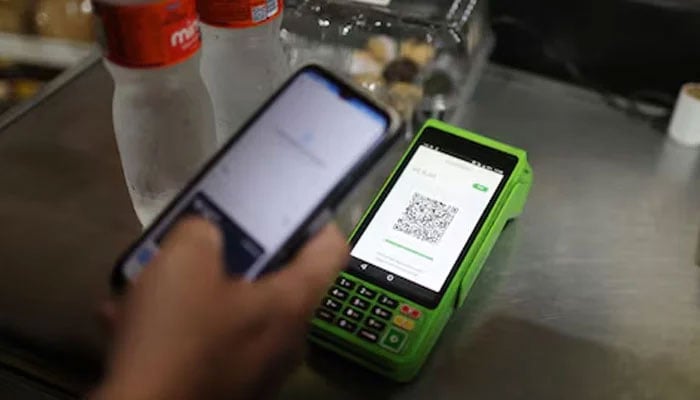
- The share of digital payments in Q4FY24 increased to 27%.
- Retail transactions witness an 8% increase in volume in Q1FY25.
- 251 million (13%) transactions processed via OTC channels.
KARACHI: Amid the government’s relentless efforts to digitize the economy, the State Bank of Pakistan (SBP) has revealed significant progress in payment ecosystems and infrastructure, with 87% of all retail transactions processed through digital channels, News reported Saturday.
In its quarterly review of payment systems for the first quarter of fiscal 2025, the central bank said on Friday that digital channels reported a total of 1.699 billion retail transactions, while over-the-counter (OTC) channels ) represented the remaining 13%, or 251 million transactions.
The report further notes an 8% increase in retail transaction volume, reaching 1.951 billion and totaling Rs136 trillion during the July-September period.
In value terms, the share of digital payments increased from 24% in Q4FY24 to 27% amounting to Rs 36 trillion, while OTC payments – through bank branches and agent banks without branches – accounted for 73% for a total of Rs 100 trillion.
The report highlights that the primary objective of any country’s payment system is to provide safe, efficient and reliable payment options for transferring funds, purchasing goods and services, settling payments and facilitating money movement.
The payment system in Pakistan plays a crucial role in ensuring customers have access to efficient and secure payment options.
The country’s payment infrastructure includes PRISM — real-time gross settlement system (RTGS), Raast instant payment solution, 33 banks, 12 microfinance banks (MFBs), five payment system operators, service providers (PSO/PSP), four electronic money institutions. (EMI) and 12 branchless banking (BB) players, as well as fintech and third-party service providers.
Together, these entities provide transparent and secure fund transfer and settlement options to Pakistanis.
In Pakistan, payments can be divided into two main categories: large-value payments, processed through the RTGS system, and retail payments, which generally involve low-value transactions carried out during regular business or daily activities.
Since its inception in 2022 and till the end of Q1 FY25, Raast has processed 848 million transactions, totaling over Rs 19 trillion, and continues to grow at a steady pace, the report said.
In Q1FY25, transaction volume and value increased by 17% compared to Q4FY24, with volume reaching 197 million transactions and value reaching 4.7 trillion Rs. The daily average of transactions reached 3 million. At the end of the quarter, 39.5 million Raast IDs were registered. Raast improves the efficiency of instant payments for individuals and businesses.
Mobile banking apps provided by banks, MFBs, BBs and EMIs played a pivotal role in this growth, with 1,301 million transactions amounting to Rs 19,000 billion carried out through these apps during the quarter, reflecting an increase of 11% in volume and 14% in value. . The total number of mobile banking app users increased by 4%, reaching 96.5 million from 93 million in the previous quarter.
The report notes that e-commerce is also becoming an integral part of digital payments in Pakistan, with a 29% increase in online e-commerce payments.
Of the 118 million online e-commerce payments during the quarter, 91% were made via digital wallets, signifying a move away from traditional card-based systems.
To complement this growth, the number of point-of-sale (POS) terminals increased to 132,224, enabling 83 million transactions worth Rs429 billion.
The ATM network has expanded to 19,170 units, facilitating 243 million transactions worth Rs 3.9 trillion, retaining its key role as a cash withdrawal channel.
Efforts to include underserved segments have gained momentum, with branchless banking agents playing a critical role in expanding financial services, particularly in rural and remote areas.
Over 693,178 agents processed 28 million payments, mobile recharges and 75 million cash deposit and withdrawal transactions during the quarter.
Retail merchants accepting digital payments saw 16% growth, driven by branchless banking initiatives that enable payments via mobile wallets, QR codes and other digital tools.
These developments highlight the importance of alternative financial channels to reduce economic disparities between regions.
